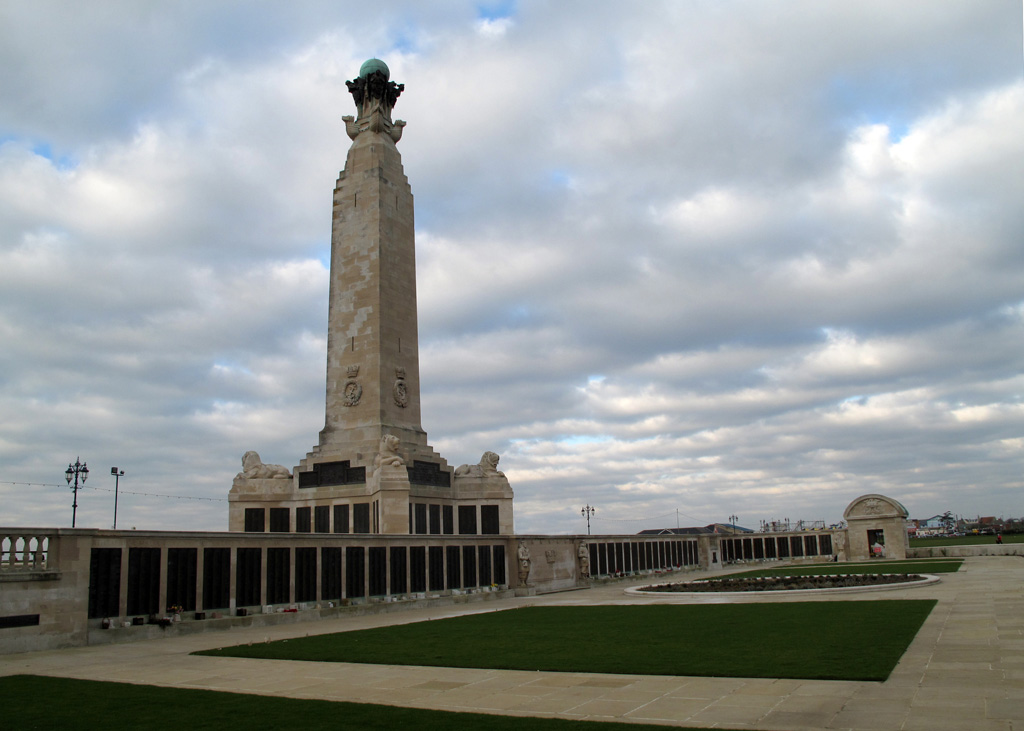Portsmouth Naval Memorial
- Country United Kingdom
- Total identified casualties 24652 Find these casualties
- Region Hampshire
- Identified casualties from First & Second World War
- GPS Coordinates Latitude: 50.78242, Longitude: -1.09599
Our War Graves, Your History
Discover more about the history of Portsmouth Naval Memorial and plan a visit through our Our War Graves, Your History project.
Find out moreLocation information
The Memorial is situated on Southsea Common overlooking the promenade, and is accessible at all times. A copy of the Memorial Register is kept at the Portsmouth Civic Offices in Guildhall Square and may be consulted there. http://www.memorialsinportsmouth.co.uk/southsea/naval.htm
Visiting information
PARKING
There are parking spaces (pay at the machine) in front of the memorial, on the seafront side of the road. There are car parking facilities in Southsea Common Car Park or the Seafront Esplanade Car Park, which is next to The Trafalgar Memorial.
ACCESS, LAYOUT AND MAIN ENTRANCE
There are two unique sections to the memorial. The first section is a large stone obelisk topped with a copper globe. The obelisk stands on a platform surrounded by steps.
The only access up to the obelisk is by climbing four stone steps, onto a flat level stone platform with a smooth surface where the monument has a central position.
The second section of the memorial is a long-curved wall, on which bronze panels displaying the names of casualties are engraved.
The extension to the memorial is an enclosure added to the back of the original memorial. There are low walls with bronze panels inscribed with the names of casualties. There are two-barrel vaulted pavilions either side of the enclosure at the rear of the memorial.
ALTERNATIVE ACCESS
For access to the memorial wall and bronze panels behind the obelisk, visitors can enter via two entrances. Both entrances are highlighted by stone columns, each with a stone unicorn or lion on the top. The entrances open onto a flat, level, stone surface and allow access close to the wall to view the memorial panels.
ADDITIONAL INFORMATION
Portsmouth Naval Memorial is permanently open.
History information
After the First World War, an appropriate way had to be found of commemorating those members of the Royal Navy who had no known grave, the majority of deaths having occurred at sea where no permanent memorial could be provided.
An Admiralty committee recommended that the three manning ports in Great Britain - Chatham, Plymouth and Portsmouth - should each have an identical memorial of unmistakable naval form, an obelisk, which would serve as a leading mark for shipping. The memorials were designed by Sir Robert Lorimer, who had already carried out a considerable amount of work for the Commission, with sculpture by Henry Poole. The Portsmouth Naval Memorial was unveiled by the Duke of York (the future George VI) on 15 October 1924.
After the Second World War it was decided that the naval memorials should be extended to provide space for commemorating the naval dead without graves of that war, but since the three sites were dissimilar, a different architectural treatment was required for each. The architect for the Second World War extension at Portsmouth was Sir Edward Maufe (who also designed the Air Forces memorial at Runnymede) and the additional sculpture was by Charles Wheeler, William McMillan, and Esmond Burton. The Extension was unveiled by the Queen Elizabeth, the Queen Mother on 29 April 1953.
Portsmouth Naval Memorial commemorates around 10,000 sailors of the First World War and almost 15,000 of the Second World War.



